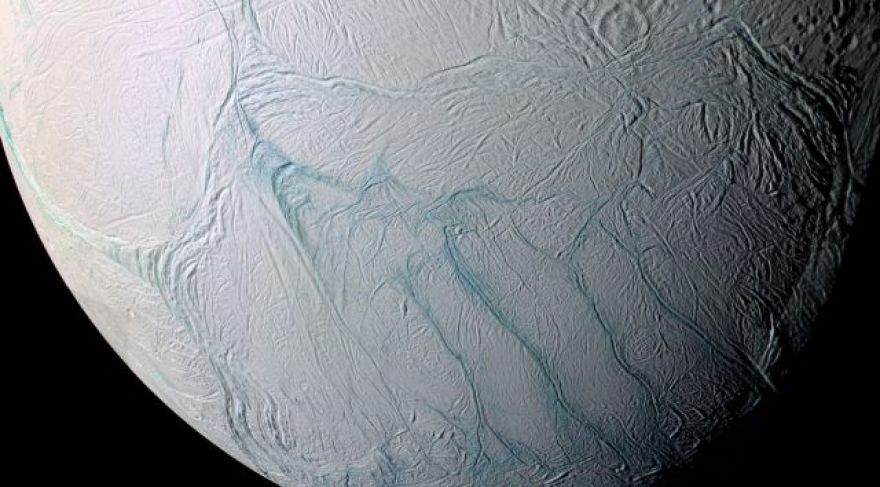
Cassini readings from Enceladus show a thin icy crust and surprising heat below
Cassini found cryovolcanoes at the south pole of Enceladus, the sixth-largest moon of , back in 2005. These jets originate from the “tiger stripes,” four warm fractures in the moon’s icy surface. The chemical composition of the geysers points to a briny underground ocean that might extend the whole way to Enceladus’ rocky core, similar to the sub-surface ocean that is thought to exist on Jupiter’s moon, Europa. Now a new study has been published that agrees with the 2005 results, and sheds further light.
“During this flyby, we obtained the first and, unfortunately, only high-resolution observations of Enceladus’ south pole at microwave wavelengths,” said lead author Alice Le Gall in a statement.
Neither solar illumination nor Saturn’s heating can explain this difference in temperature, so there must be an additional source of heat. Le Gall and colleagues think that the anomalous warmth is because of tidal stresses on the moon as it moves through its eccentric orbit around Saturn.
Geysers erupting from Enceladus
But that’s not all found. The icy crust of Enceladus has an average depth of 18–22 km, but the ice shell gets as thin as an eggshell around the south pole. It appears to be less than 5 km thick there. The moon’s four tiger stripes are in this area, making it highly that the reduced crust thickness, the 130km long stripes, and the are all related. The tiger stripes also lack impact craters, implying that they’re a young formation that occurred relatively recently. And while the surface of Enceladus is typically covered in a blanket of very fine-grained water ice, the areas around the tiger stripes are coarse. CO2 and simple organic compounds have also been found within the tiger stripes (and nowhere else on Enceladus).
“Finding temperatures near these three inactive fractures that are unexpectedly higher than those outside them adds to the intrigue of Enceladus,” Cassini Project Scientist Linda Spilker from the JPL. “What is the warm underground ocean really like and could life have evolved there? These questions remain to be answered by future missions to this ocean world.”